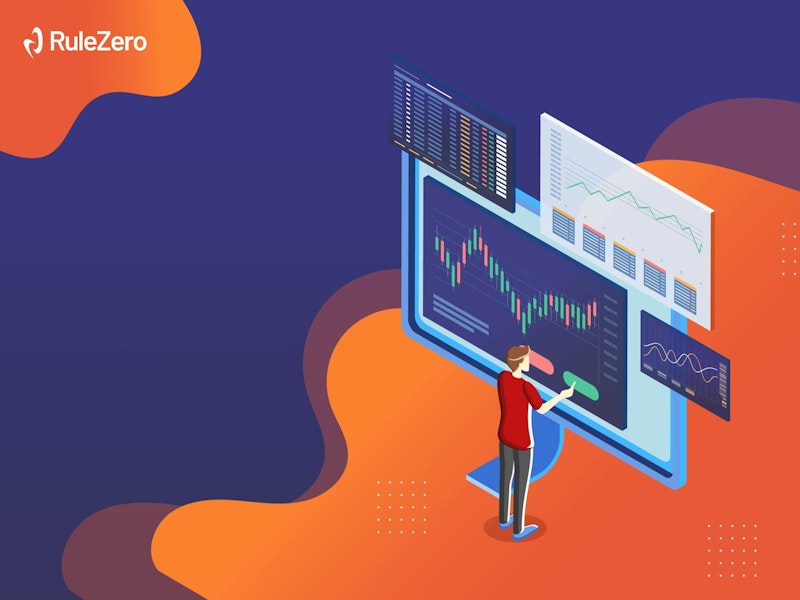Now that we’ve understood the basic elements of a cap table, let’s consider a real-world scenario to see how a cap table is built.
A company is typically incorporated with the seed money brought in by the founders. So, Helix Pharma, the company we talked about in our previous blog, was owned entirely by its founders, Charles and Lalita, in the beginning. Once Helix began to grow however and raised funding from family, friends, and venture capitalists, the founders’ ownership became diluted, and they owned a lesser stake than what they started with in the company.
Companies can have a multitude of shareholders who have invested across different rounds of funding. Typically, each round of financing has its own set of terms and conditions. All of them must be captured and recorded systematically. This is done in the cap table.
What are the elements using which a cap table is built?
- Investment amount
- Shareholders’ details and types of stock they own
- Type of securities issued – equity, preference, warrants, options
- Total outstanding securities of the company
- Investor groups – founders, angel investors, venture capitalists
- Funding rounds – incorporation round, seed round, Series A, B, etc.
- Total investment amount raised
- Net worth of shareholders
- Pre-money and post-money percentage holding
- Percentage of dilution
- Break-up of stock options
Not all these boxes are checked in all rounds. However, most rounds are defined by this set of parameters.
How cap tables are built: A step-by-step guide
Incorporation round
Charles and Lalitha are founders of Helix Pharma Private Limited. At the time of incorporation, they both invested INR 50,000/- each in exchange for a 50% stake in the company.
Name of shareholders | Number of shares | Type of shares | Investment Amount | Ownership |
Charles Keith | 5000 | Equity | 50,000 | 50% |
Lalita Suman | 5000 | Equity | 50,000 | 50% |
Cap table 1
Angel round
With each day, as the company grew, they needed more funds to keep the momentum growing. They approached their family, friends, and acquaintances (angel investors) to fund the company.
Two angel investors, Veena Kohli and Aakanksha Shaw decided to invest INR 10,00,000 each in the company. They valued Helix Pharma at INR 1,05,00,000. The value of the company after their investment is INR 1,25,00,000 (1,05,00,000 + 20,00,000).
With two new investors in the company, the number of shareholders totalled up to four. So, the ownership of the company is now split four ways. Which shareholder owns how much of the company is decided based on the money that each of them brought into the company. Since the founders did not make any additional investment beyond what they had put in at the time of incorporation, their shareholding percentage gets diluted. The extent of dilution (which is expressed as the percentage of dilution) is calculated by dividing the investment amount in the round by the post-money value of the company. The number of shares to be issued to the new investors is calculated using a formula based on the dilution percentage and the total number of equity shares before the new investment.
After the investment by angels, this is what Helix Pharma’s cap table looks like:
| Shareholders | Number of Shares | Type of shares | Investment amount | Ownership |
| Charles Keith | 5000 | Equity | 50,000 | 42% |
| Lalita Suman | 5000 | Equity | 50,000 | 42% |
| Veena Kohli | 952 | Equity | 10,00,000 | 8% |
| Aakanksha Shaw | 952 | Equity | 10,00,000 | 8% |
| Total | 11,904 | 21,00,000 | 100 |
Cap table 2
Creation of stock option pool
Helix Pharma continued on its growth path, and generated interest from venture capital (VC) funds. All VCs whom Charles and Lalita met spoke, who opined that a pool of stock options be created before they invest. Helix’s management decided to reserve a pool of 10% for employees’ stock options (ESOP pool).
Note:
Every time a pool is created, shares are set aside, to be issued to employees in future. It does however have an impact on the holding of all shareholders on the cap table.
The number of shares reserved under ESOP are calculated based on the total number of equity shares issued till date and the percentage of shares reserved under the plan.
Here’s how Helix Pharma’s cap table looks after shares were reserved in the options’ pool:
Shareholders | Number of Shares |
Type of shares | Investment amount | Ownership |
Charles Keith | 5,000 | Equity | 50,000 | 38% |
Lalita Suman | 5,000 | Equity | 50,000 | 38% |
Veena Kohli | 952 | Equity | 10,00,000 | 7% |
Aakanksha Shaw | 952 | Equity | 10,00,000 | 7% |
Stock options | 1,323 | – | 10% | |
Total | 13,227 | 21,00,000 | 100% |
Cap table 3
Series A funding
A few months later, as Helix began to scale its operations, the management realised that it was time to get a large volume of funds from an institutional investor. After several discussions with various VC funds, Helix Pharma signed a term sheet with NUV Capital, who agreed to invest INR 50,00,000. The company was valued at INR 22,00,00,000 prior to the investment. As before, the number of shares to be issued to NUV Capital post their investment is calculated based on the amount they invested, the total number of shares issued prior to NUV’s investment, and the percentage of dilution.
Here’s Helix Pharma’s cap table after the NUV investment:
Shareholders | Number of shares | Type of shares | Investment amount | Ownership |
Charles Keith | 5,000 | Equity | 50,000 | 37% |
Lalita Suman | 5,000 | Equity | 50,000 | 37% |
Veena Kohli | 952 | Equity | 10,00,000 | 7% |
Aakanksha Shaw | 952 | Equity | 10,00,000 | 7% |
NUV Capital | 301 | Preference shares | 50,00,000 | 2% |
Stock options | 1,323 | Options | – | 10% |
Total | 13,528 |
| 71,00,000 | 100 |
Cap table 4
Story of cap table
As you can see from above, at each stage of funding, when securities were issued to all investors – individual and institutional – in exchange for their investment, every transaction has an impact on the cap table, especially in terms of diluting the ownership of founders and angels who don’t invest in successive rounds. Without a systematic cap table, neither the founders nor other shareholders will understand what their ownership is, and how it may dilute with each fund raise. If founders aren’t watchful, it may lead to them losing control of their company.
On the other hand, a cap table is invaluable to investors too, who need to see how the company has progressed, in terms of value especially, and what their investment is going to earn for them. The cap table serves as a practical starting point for both.







